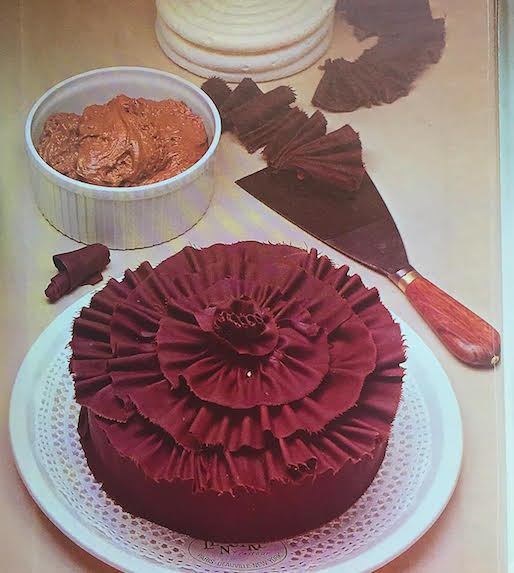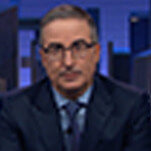Life-Changing Cookbooks: Lenotre’s Desserts and Pastries
Photo by Eric BRISSAUD/Gamma-Rapho via Getty Images
This is the story of a cookbook that changed my life. It’s a book written by a man who was an old-school professional French pastry chef, but I used it as a woman to become a professional chef at a period in time when women chefs in restaurant kitchens were uncommon—much more than they are today. If you ask me what comes to mind when I think of this book, I’d immediately say French buttercream, followed by baked French meringue, followed by thinking of fine pastry as something best made—or best “built,” actually—by using the innate structures and personalities of the ingredients.
Gaston Lenotre is the name of the chef. He lived in Paris from 1920 to 2009. And fittingly, in my case, his mother was one of the first women chefs in Paris in the early 1900s. Lenotre wrote nine books, cooked for high-profile clients and was an accomplished businessman, opening pastry shops/cafes and a culinary school. Though not as well known in the U.S., Lenotre is one of France’s most honored chefs and is known as part of French culinary culture and history.
Some people remember the past through things they ate. Memory, place, time, flavors, people … all blend together into a perfect diorama of specific acts with unchangeable meanings. I remember the past not so much from the things I ate, but more from the things I cooked. And many of the things I cooked as a self-taught professional chef were found in books. Lenotre’s Desserts and Pastries was one of the best of those books.
The kitchen was seriously hot that summer day. It usually was, if you arrived in the afternoon rather than the morning. The door to the parking lot was open to let in some air, but it didn’t help much. The four ovens, two six-burner stoves, double grill, fryolator and steamer were all giving off heat that was added to by seven cooks who were prepping food for the day, with handfuls of waiters and waitresses moving quickly in and out of the kitchen. As service time approached the pace at times became ridiculously fast, angling towards being out of control.
I could start my workday whenever I wanted to, as the Pastry Chef of this upscale suburban restaurant which seemed as if it had been dropped down—with a little bucket of hope—from the sky into the center of an enormous black concrete parking lot with lots of space for cars of the many anticipated diners-to-be. The pastries at this restaurant were somewhat “important,” but not all that important. It was one of those places where the Executive Chef’s skills and interests were focused on main course food, savory food, and the reputation of the place was to be made on that, and not on the pastry. Pastries and desserts were afterthoughts.
 Photo by Karen Resta
Photo by Karen Resta
The Exec Chef had been brought in by the owner to “make the place,” to change it from a high-production catering company to a fine dining restaurant aimed at the aspirational dining crowd. In the year the restaurant had been open, pastries and desserts hadn’t been important to the servers either, since they were being made from boxes and pre-prepared bulk ingredient—and just weren’t too special, to say it mildly. Cakes were whisked together with Duncan Hines mixes, topped with a huge glop of icing from a huge white tub with black letters detailing the chemical compositions that would allow the icing to last past doomsday, if that ever came; pies were made from frozen pre-made shells then filled with over-sweetened fruit poured out from cans the size of a steamer ship. In other words, there was no good tip money to be made for the servers by selling desserts since the desserts were pretty bad—and there’s nothing that lowers a tip more quickly than a poor ending to the meal.
This was the early 1980s—a time when women were first beginning to enter professional kitchens in larger numbers than ever before. We were the exception, not the rule. In that kitchen, we had an Executive Chef who was a woman—partnered with her husband as General Manager. There was a “salad girl” who came in for several hours to prep salad ingredients next to the dishwasher, who was a Mexican guy, who was doing the same—then she would leave for the day. A guy took over the salad station during service. The rest of the women in the place were waitresses. The Exec Chef never cooked, was never on the line—she spent her time in her office or drinking at the bar.
As I walked in that day the guys behind the line did their usual little dismissive dance. Roger’s prematurely almost-bald head flicked sideways, away from his saute-pans for the briefest moment, the steam on his gold wire-rimmed glasses blending with the sweat on his forehead. Behind that forehead was a brain with an investment of thousands of dollars in the form of an MA in Philosophy which had never been used as a professional asset. Instead he was a line cook, and had been for years. After shooting a quick look at me, his soft shoulders angled forwards and backwards in an I-dare-you shimmy that was ever so slight while his legs inched more apart. He edged his crotch forwards toward the stove as if he were going to f*ck it—as if he could f*ck it if he just wanted to. His message was clear: This is a man’s job. Photo by Karen Resta
Photo by Karen Resta
Frank was even more direct, and more abrupt. He could be, since he was a graduate of the renowned Culinary Institute of America. Slamming the oven doors closed and slapping a towel on the line, he sneered slightly in my direction with a cross between amusement and derision, and moved even faster than he had been moving before—his beard, mustache and simple huge-ness of stature giving him the air of a strong but somewhat out-of-place furry black bear. He watched, staring bluntly, as I pulled on my apron and walked over to the space that had been allowed for the pastry station—which was basically a stainless steel table in the center of the kitchen. Frank had a habit of piling things on the pastry table, so every time I arrived to work I’d have to move it all and put it where it was supposed to be—while feeling his gaze the entire time, his eyes slowly chewing me up, as they had been doing each and every day I’d walked into that kitchen—which at the time was for three long weeks.
As I lifted the piles of sheet pans, shifting them onto the racks where they belonged, a vision rose in my mind of a scene I’d walked in on at closing time the previous week. The Exec Chef had been sitting there—right in the middle of my nice clean stainless-steel assigned pastry-making table—pulling the Sous Chef towards her with her legs then wrapping them around his chest as he slightly-squirmed, slightly-enjoyed it. She was drunk. He wasn’t.
-

-

-

-

-

-

-

-

-

-

-

-

-

-

-

-

-

-

-

-

-

-

-

-

-

-

-

-

-

-

-

-

-

-

-

-

-

-

-

-

 Photo by Karen Resta
Photo by Karen Resta






































